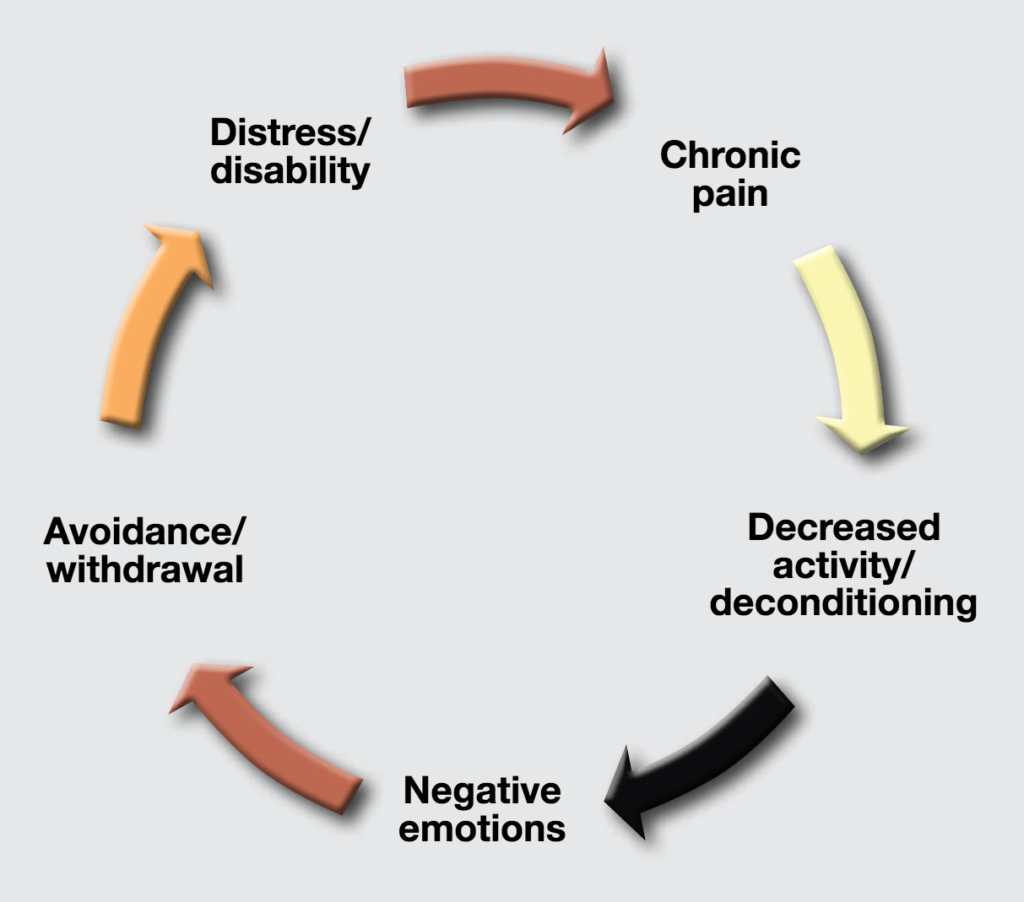Our daily lives are made up of feedback loops. Most are positive, like when a “Runner’s High” after a jog makes it more likely we’ll exercise again tomorrow. This is how healthy habits are built. Some are negative: if you get slapped in the face when asking for a date, you’ll be less likely to ask next time.
In cognitive behavioral therapy, a therapist helps you identify how our feelings, thoughts, and actions dynamically feed off of and reinforce one-another. But what can we do when one of those elements seems to remain constant, as in the case of chronic pain?
Chronic pain sufferers become less likely to go out to social functions. Reduced activity creates de-conditioning–“if you don’t use it, you lose it”. If we can’t work through this loss it leads to negative emotion, driving us to isolate from others–reinforcing our pain further. Feedback loops like this can quickly spiral out of our control.

Moderating Reinforcement
If we realize we’re in a rut like this, what do we do about it? The trick to arresting the cycle is all in the timing, as Amanda Wakefield explains:
“The distress/disability phase of the pain cycle is the most amenable to change in therapy. It’s harder to intervene in pain. This is because pain is directly influenced by mood, activity level, etc., and can vary widely.
Particular activities or attitudes can directly intervene in the cycle in other areas and they will indirectly affect pain. A therapist uses models like these to identify the impact of particular actions (or lack of action) in a certain area of functioning. This cycle is especially relevant to people who are not doing enough activity.
All areas can be used for intervention and are used frequently. I find that chronic pain is hardest to intervene in. However, teaching appropriate pacing can be a powerful direct intervention even in this phase. Sometimes it works best to identify the areas a patient already believes have the most potential for change, and start there.”


Tony Brenner believes that CBT can be used to similarly arrest the ‘downward spiral’ can can occur in a wide variety of mental health situations. In the context of chronic depression, Tony explains his strategy:
“Helping people identify and challenge problematic patterns in their thinking and behavior is an empowering intervention. For example, meeting chronic depression with CBT allows the client to begin to develop different responses to catastrophic, negative thoughts. This is done by approaching these thoughts as statements to be verified as opposed to facts. This in-turn helps the client develop their ability to change their perception of their current situation.”
Have you noticed these patterns in your life? Becoming entrenched in these habits can be very easy to do alone, and recovery will require support.
The good news is that the cycle can stop no matter how long it has been going. It all begins with a simple decision to do something different. A therapist or counselor can make a great coach in this new endeavor. The most important thing is to keep trying, as “the journey of a million miles must begin with a single step”.




